Vivacious in Vermont!: Express Fluency 2017
I have never left a conference so emotionally uplifted! Elissa McLean’s effort to create a positive, fun, invigorating, and inspiring conference truly shines through every moment of the learning labs, presentations, and workshops that she pulled together.
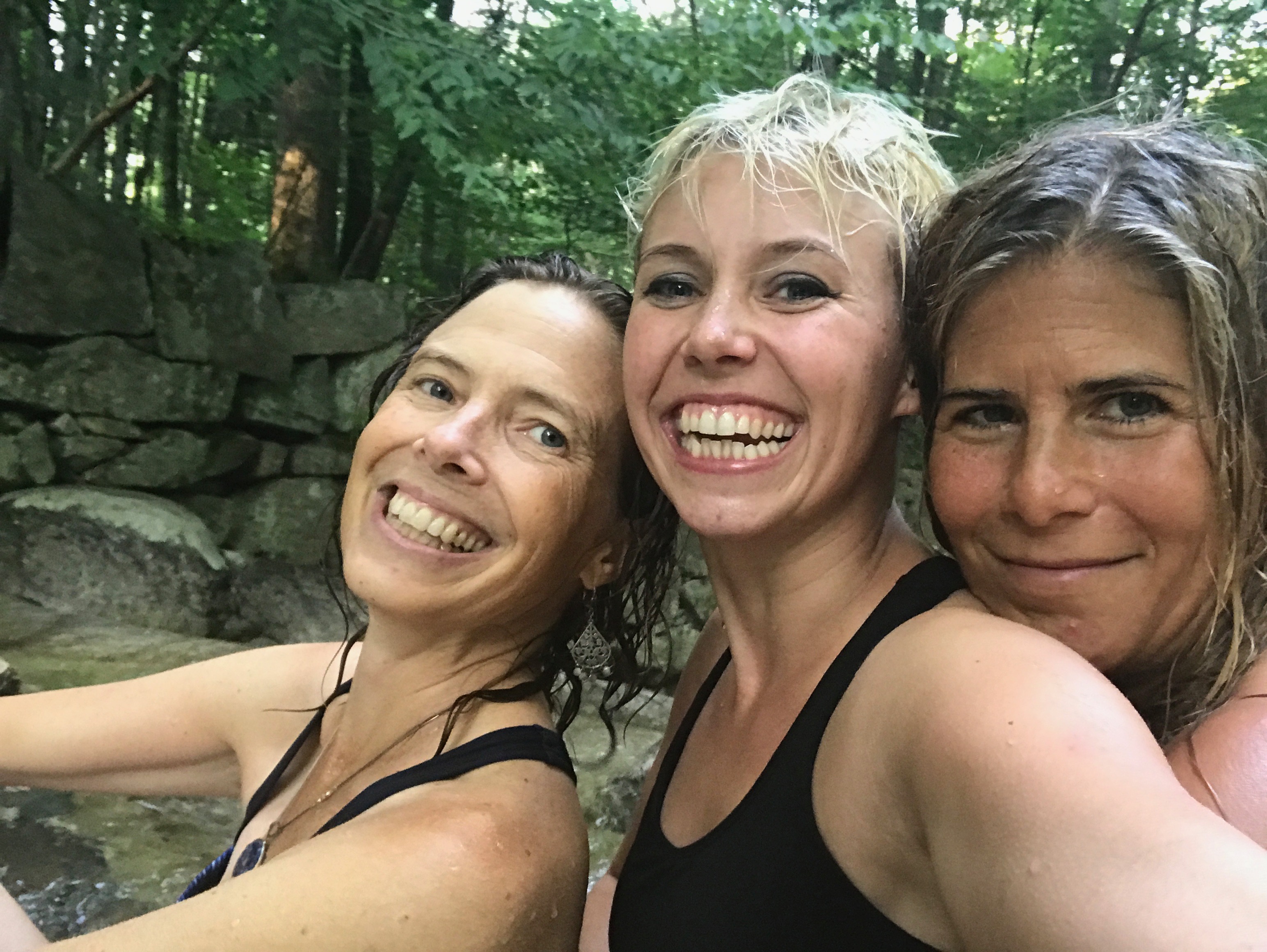
As promised, what follows is a recap of the Learning Lab debriefs of my classroom as well as answers to many of the questions y’all asked me this week. I have included MANY links throughout this blog so please click on anything that is underlined. In addition to this, I have also uploaded ALL of the following documents to the Google Docs folder for the conference. Elissa sent out an email with the link to that folder on the 8th of August.
- Brain Breaks with La Maestra Loca
- Simple Planning Shortcuts with La Maestra Loca
- Movie Talks and Picture Talks with Elissa McLean and La Maestra Loca
- Creating a Classroom that Manages itself with La Maestra Loca
- Learning Lab (all of my slides for my class)
Day 1: Monday August 7th: Learning Lab Debrief (Thank you to Allison Litten for typing up bullet points for me! It made it MUCH easier to remember everything and elaborate later!) Anything in bold is something I have elaborated on. The rest is comments from the teachers in the room observing.
How did La Maestra Loca keep the input comprehensible or build a classroom community?

- Gestures
- ¿Como se dice________? and then the wait time
- Structures posted around the room-this is intentional, forces her to slow down (she has to walk around and physically move to the words and point to them as she goes)
- a lot of repetition (yes/no questions), use the same structures differently
- Repetition without being boring.
- THIS IS SO IMPORTANT. Especially in level 1. Rather than feeling like you HAVE to add in more structures and language, instead, use the same structures and stay sheltered but use them in a variety of ways and contexts. Talk about the kids in your classroom, talk about the people they know outside of the classroom. Talk about the structures within a movie talk or a picture talk. READ together! Create novelty but stay sheltered!
- This was a lot of language for one class, but need to lay the foundation for the rest of the week
- This was a non-targeted comprehensible input class class.
- out-of-bounds words were not high-frequency, but important to the content of the class (on a separate sheet) – There were only 2 of them after three hours!
- Connection with almost all students in the class right away
- Building relationships is the most important piece to my classroom management
- She shows she cares about them, and then they will want to work for her! (This can be critical for students in high poverty schools.)
- Students evaluate her right away. (She had buy-in from the students right away.)
- Even though I did the dancing Brain Break on the first day it was because I felt like I had a strong enough bond with the class to jump into it! Normally it happens later in the year, once the students trust the teacher and know that the weirdness is OK.
- From HS perspective-harder to get buy-in from that age (has been her hardest level)-there’s an apathy/self-consciousness
- Same rules regardless of level
- Her point system helps with that buy in
- You have to be positive and confident that they will buy in and participate.
- Elementary kids just loves points, HS want to know what they get out of it (sometimes it can be as simple as giving them a day in English!
-
-
-
- The point system builds community. (First party within first month-give them 3 options; change the system after each party.)
-
- Create a team of teachers who have similar schedules-art, music, PE-and advocate for yourselves.
-
Q&A
- How do you assess?? Assessment: language teachers should do formative assessment more than any other teachers (comprehension checks, close their eyes, check gestures-when students hesitate, it means they haven’t had enough input) it is so easy for us and it is essential in order for us to know how to continue with the input.
- formative
- happens all the time
- she marks that she’s doing this
- summative
- free writes (invent story or retell story)-model for them beforehand!
- formative
-
-
-
- 6 minutes, write whole time
- no English
- be creative
- they will output what they have acquired
- 6 minutes, write whole time
- mini-quiz before they leave (on scrap paper), shows you who was listening
- if kids look at board to find the answer, that’s fine (but that means they haven’t heard it enough), but observe them as they write
-
- What about for students like E in class: E-he’s a student who has bought in, but he will be a good barometer
-
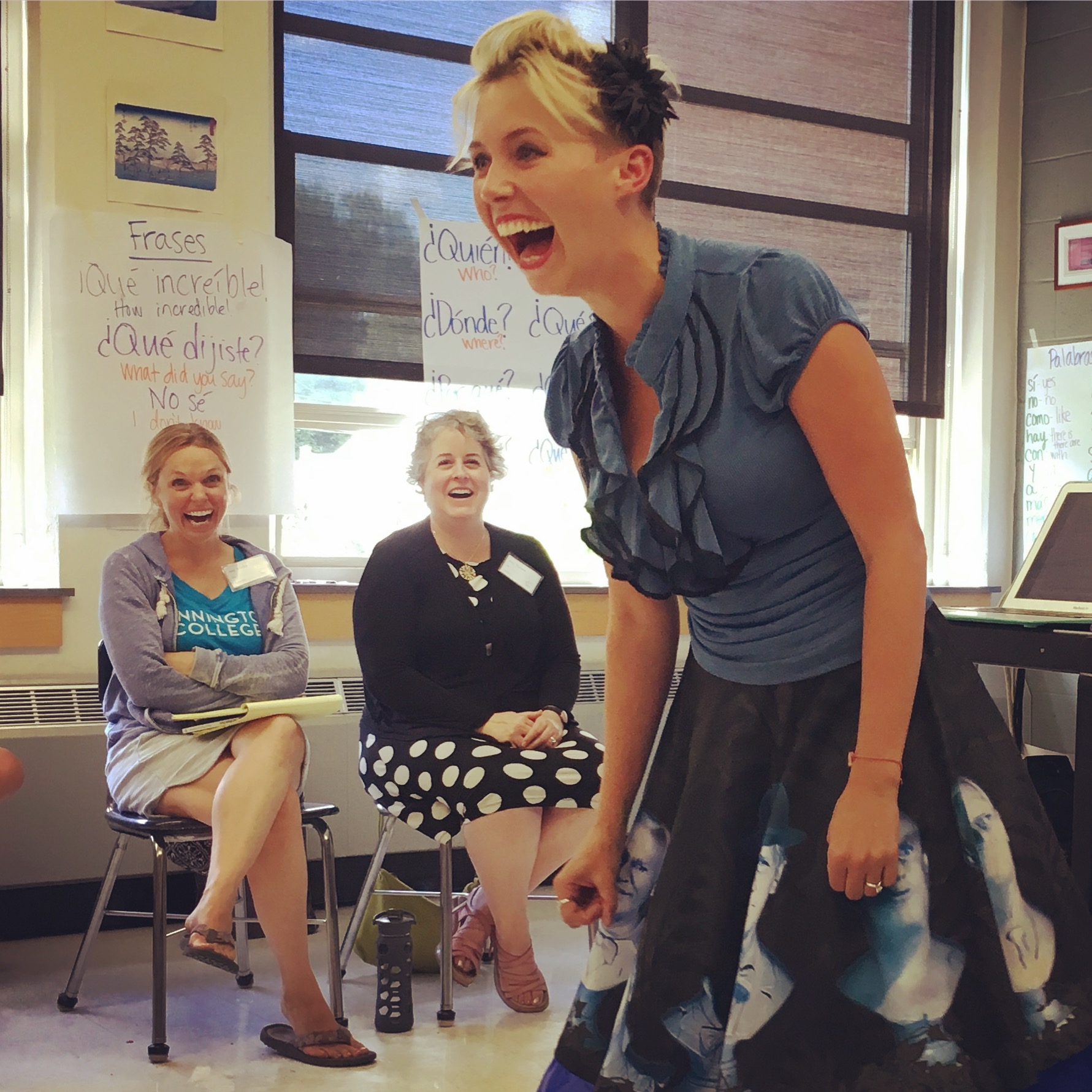
- for students who repeat: tell them it’s cool that they’re doing that, but tell them you don’t want that (if there are students who are ready for output, great!)
- if there’s a student who repeats a lot, start a Brain Break and then whisper to that kid a reminder to not
- What does your first week look like?
- Look at my blog I just wrote on this! 🙂
- MY first week is probably 80% English, I spend a lot of time on rules, I show exactly what I’m looking for, discuss character traits of a language learner
- English is phased out quickly (see kids 2x/week, after 3 classes, ditch English)
- The bits of English used in LL today was used to get buy in and set some of my high expectations
- Look at my blog I just wrote on this! 🙂
- How do you dedcide what you START with on the walls?:
- Personally? I have:
- rejoinders (w/o English)
- Rules
- Brain Breaks poster
- don’t be a whiner
- palabras pequeñas
- question words
- circunloquio (Como se dice goes away after 8 weeks or so)
- Personally? I have:
- What about the kiddos with sensory overload, like A and P?
- I noticed that twice: 1st-close eyes, breathe brain break; 2nd-circle and energy squeeze (focus wasn’t at all on Spanish, gives them a break); you can use that chance to check in with a kid(s)
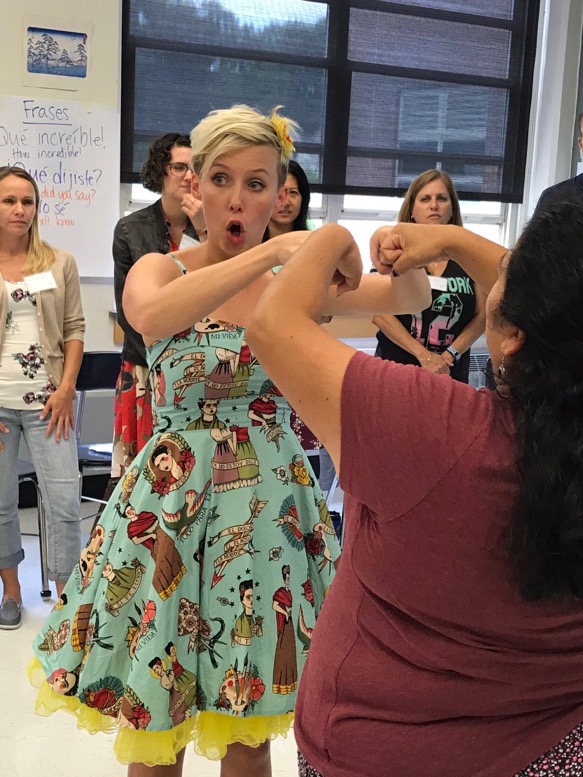
 Day 2: Tuesday August 8th: Learning Lab Debrief (Thank you Lizzy for helping collect these notes! I appreciate you! Lizzy was one of two of the adults in my classroom actually taking Spanish with kiddos!)
- Things that kept the language comprehensible (we skipped this because most people were here yesterday)
- Observations and questions
- Student: A who had a melt down during the movie talk—it was a cartoon, what exactly did you say to her? : Big Buck Bunny was the name of the cartoon.
- First I would like everyone to notice how incredible our classroom community is! After only 5 hours of Spanish, my “classroom†listened when I asked them to get up and get to a Brain Break right away so I could handle her melt down. (Student A charged at me and melted into my tummy in tears)
- Everyone in class saw her upset, but didn’t make a big deal about it
- It was awesome to have brain breaks in place b/c the rest of the class just went and did one of our line versions of Rock Paper Scissors
- I had forewarned Student H about the movie because I was worried she was going to be scared of the butterfly getting hurt, but didn’t know to talk to A ahead of the time because  I didn’t know she was terrified of cartoons.
- When student A started crying and came to me, I told her sorry, and that it was fine, then I went into detail about some silly things that were yet to come in the video. I also told a white lie and assured her the butterfly wasn’t really squished and comes back to life. Next I checked in with her and asked if she was okay with watching the rest of the movie. She was.  She played rock paper scissors for a few minutes (introducing her back to her peers and the community, ALSO so the others could see she was OK) When everyone sat, I checked with her ONE more time to make sure she was Ok to watch, by giving her a high five and making strong eye contact. (ALL of that took about 2 minutes) Then I skipped some scary butterfly scenes. Â
- A couple of my kids were frustrated that I skipped some scenes. Rather than taking points for them “complaining†I just winked and smiled and told them I would tell them why I had to skip later. After class I told them about student A being scared and gave them the link to the YouTube video.
- First I would like everyone to notice how incredible our classroom community is! After only 5 hours of Spanish, my “classroom†listened when I asked them to get up and get to a Brain Break right away so I could handle her melt down. (Student A charged at me and melted into my tummy in tears)
- How do you research for Movie Talk material?
- Please go to the presentation I did on Movie Talks. It is in the Google Drive folder which was sent out by Elissa on the 8th. There is lots of good information in there!
- Also, here is a link to a data base
- I do however STRONGLY advise that you don’t pick movie talks based on “the structures†you’re using in class. Rather, choose a high interest video that your class will find compelling and figure out HOW to fit your structures that you’ve been using (and recycled structures) into THAT video.
- Use commercials and cultural short videos too! They can be amazing!
- I did one on Food Waste in the USA vs. the procedures that France has in place for its supermarkets. My kids LOVED it!
- Observer liked the activity when music stops and then the kids talk to each other.
- In Spanish 1 they do this in target language later in the year!
- Speaking and free writes get better after doing this
- I believe I got this from a Kagan strategy then I adapted it
- I use this frequently for quick share outs and comprehension checks because it is nice to have students move rather than just turn and talk
- In Spanish 1 they do this in target language later in the year!
- Do you have a Songlist to share?
- PANDORA USE IT!
- I have it constantly playing in the background of my class and I have the mute button easily accessible to me so I can silence it when I need to.
- Stations I love:
- Buena Vista radio
- Shakira radio (for older students)
- Maná radio
- Buena Vista radio
- Julieta Venegas radio
- Flamenco Guitar radio (for a music without words station)
- Classical piano (for quiet work time)
- PANDORA USE IT!
- Question: How do you deal with newcomers?
- So hard, and you have to deal with it, all of us do. Call their parents and let them know IMMEDIATELY how CI works and how you recognize this will be a challenge for their child. EMPATHIZE! 🙂
- Sits down with the STUDENT at lunch and explain what a CI class is and how the kids in the class were like them not too long ago. Â
- Explain the Affective Filter—it’s like there’s a wall in your ear, and when Spanish goes in it bounces out, and I don’t want you to have that happen to you—you will be overwhelmed and have to work harder than anyone in the class.  I put the English back up on the word walls for the new kids, and I point a LOT more and have to recycle OLD vocab and structures more than usual. ALSO WAY MORE POINTING! And Praise praise praise praise praise! Praise them for their rigorous efforts. They will work harder for you if you do.
- Question: Â Non-targeted and dealing with curriculum. Â How do you do it?
- I have a binder. Inside that there’s a tab for each class and EACH TAB has the 200 most frequently used words in Spanish.  I use a highlighter to indicate which words we have recycled or introduced as they emerged organically during class. Â
- Behind each of those, I also have a movie talk page, an extra vocabulary page (that is blank and I add to it the out of bounds words we cover) and when I make copies I adds a copy to the binder so I have a record of what they have done. Â
- If you feel more comfortable with a Targeted CI curriculum, there’s a curriculum on CIteachers.com  I wrote the middle school curriculum there with Mary Overton. Joe Dziedzic wrote the high school curriculum with several people. It’s targeted, from when I was doing that.  French and Spanish.
- I have a binder. Inside that there’s a tab for each class and EACH TAB has the 200 most frequently used words in Spanish.  I use a highlighter to indicate which words we have recycled or introduced as they emerged organically during class. Â
- Do you have any student work or a syllabus you could share?
- Yes, it is in the red binder floating around the classroom. I will be posting my new syllabus next week.
- Question: Â At the end with close your eyes and answer questions yes or no, what were you doing?
- I was writing down who got answers wrong.  Because there should be way less students getting it wrong.  If they do, it is because they haven’t acquired it yet or because I asked a poorly worded question.
- Helpful to have their eyes closed, so nobody feels embarrassed if they don’t know.  Some kids care, some don’t. It also lets them take the time to process that they need. Some answer quickly others need to hear the question once or twice.
- Student: A who had a melt down during the movie talk—it was a cartoon, what exactly did you say to her? : Big Buck Bunny was the name of the cartoon.
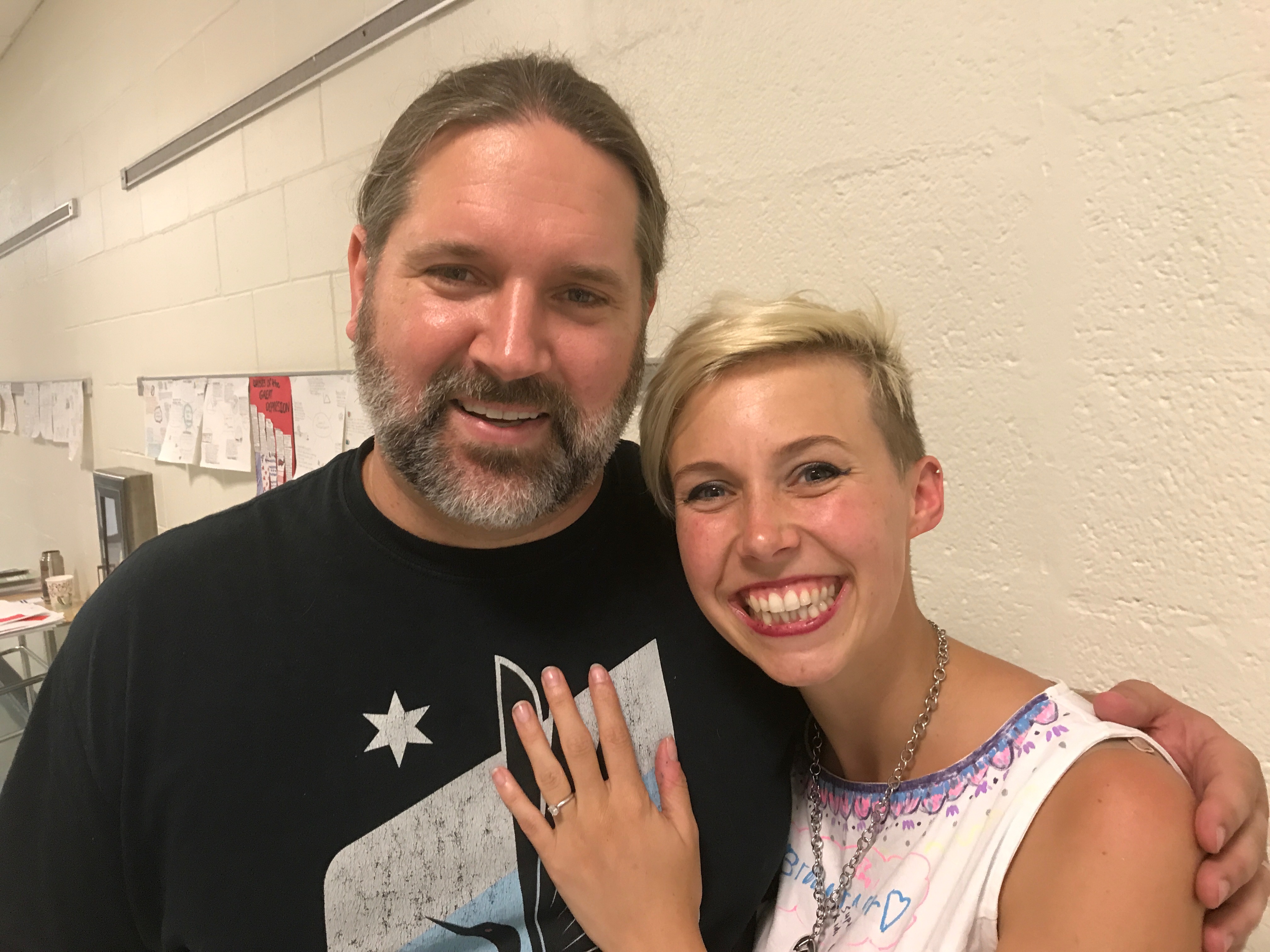
Day 1: Wednesday, August 9th: Debrief of Day Three of Elementary Spanish (thanks again, Lizzy!)
- Ways that you noticed that Annabelle made the input comprehensible—what did you observe?
- She continued to go back and recycle words that she introduced on Monday and Tuesday and she also continued to go back and recycle the language in ways that they’d heard it about the other students
- Ex. Student L lives in Wolfboro, Student U likes Unicorns, Student H likes butterflies but Maestra is scared of them.
- Lots of repetition but with different contexts—
-
- That keeps it from being BORING
-
- Gestures—she phases out the gestures as kids acquire.
- They won’t need them anymore, UNLESS I am saying the structure in a different tense (past, conditional, future, etc. )
- She keeps going back to the written structures
- After another month, the kids won’t need those words anymore because they’ll have acquired them so I take down the English translations.
- There are pictures up, and the posters are spread out on purpose so that Annabelle slows down—she is a sprinter, and that slows her down, saying them a couple times on the way and then again when she arrives at the poster she can point and pause
- Picture Talk–Told essentially the same story twice using a boy and girl
- That helped because I built the routine of WHAT we were going to talk about with the first picture, then they knew what was coming with the second.
- I loved when you ran past all the adults and jumped on the tables and across desks to reach the map high up on the back wall! That was so fun and the kids were SO excited!

- “Teach like a Pirate†it is a great book. It talks about teaching as if the students in your class have BOUGHT ADMISSION to it! It also talks about how students should feel a strong desire to attend your class even if they didn’t have to come to school! YES! BIG theatrical moments like these that are high impact are HUGE for creating a class that students are EAGER to come to!
- I loved that you used Google maps—
- Connections to other content with Common Core—using maps incorporates geography, adding up the points uses math
- Exit quizzes
- Some of the kids struggling earlier in the week did really well on the exit quizzes today!!!
- She continued to go back and recycle words that she introduced on Monday and Tuesday and she also continued to go back and recycle the language in ways that they’d heard it about the other students
- Questions/Observations
- You have three hours with them today. In a normal school you have 30/40 minutes per week—how do you break that up? What does the first week of school look like?
- I just finished a blog about the first week and you can find that here.
- Routines—talk about rules A LOT. If you only have them once/week for thirty minutes, you can be talking about rules in the first seven weeks, and the first three of those in English.
- What do you recommend for Elementary teachers who have very little time for instruction? How do you get students to a high level?
- Remember that by today, three days in, I have had these kids for 9 hours. Â For some teachers, with 30 mins/week it would take 18 weeks to get to where they are now, and it would probably take them even more because of all the English needed in between to set up expectations.
- Don’t hurt yourself with unreasonable expectations! Speak super super slowly.  Pick what you think you can do, and then pare that down, and then pare that down again. That should be your goal for the year!
- What do you do with Pre-K and K who always want to share everything LOUDLY and all at the same time and IN ENGLISH!?
- Pre-K and K wanting to share about their pets, loudly, in English all at once means they like you! Yay! It helps to have routines set up like “Hola hola…Coca cola!†to get their attention and then remind them no English…a million times. Â
- Reassure them that you WILL hear about all of their awesome pets IN TIME, but you will find all that cool stuff out in the TL! 🙂
- Just look at how many kiddos said they would CONTINUE learning Spanish after their class at Express Fluency!!! (Their eyes were closed and so were mine for HONEST answers ;)) You don’t have to get through EVERYTHING to inspire! 🙂 Creating a LOVE of language is what your goal should be!
-
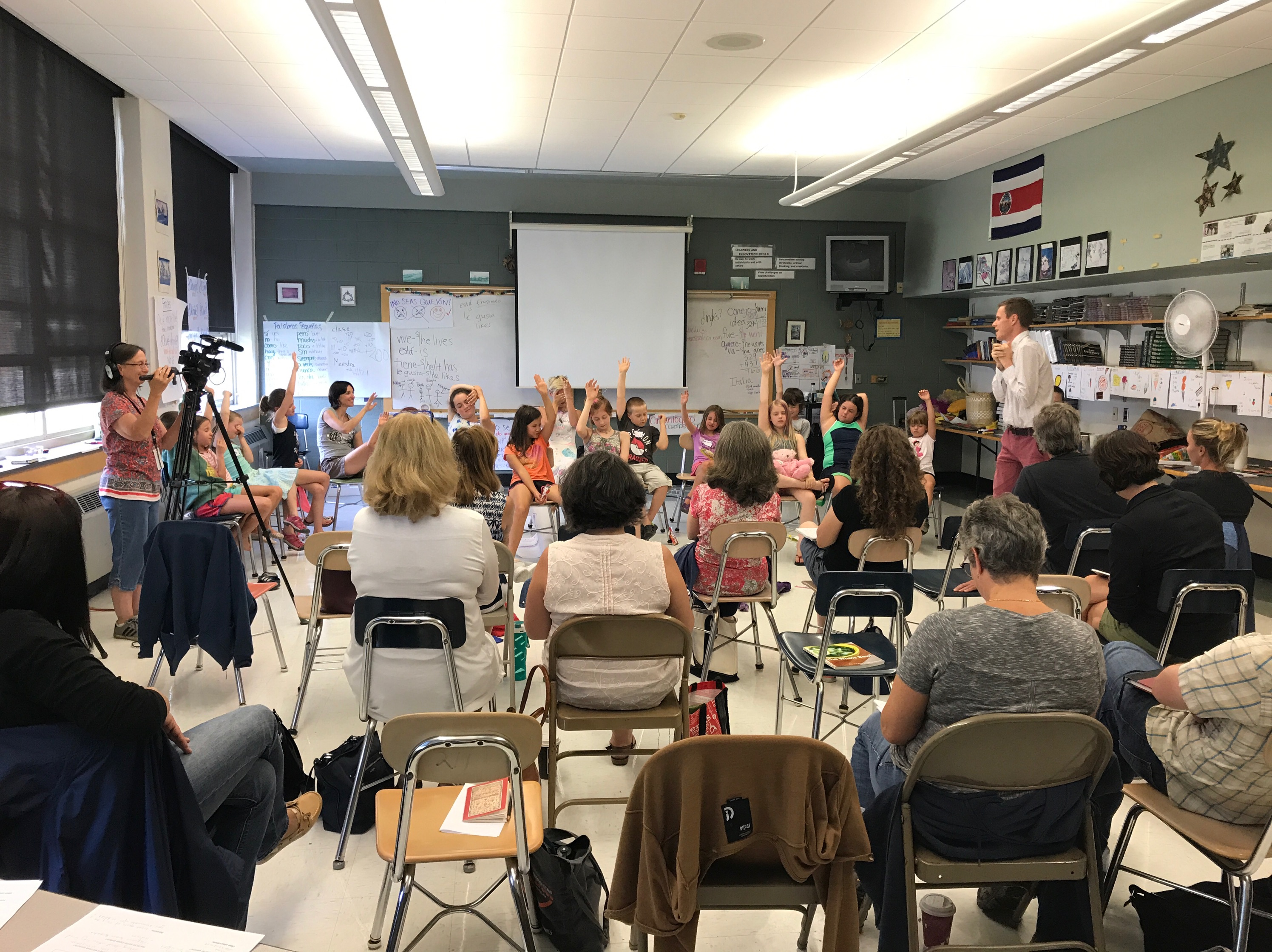
Final Debrief
- Helicóptero moment I loved that you used that as a teachable moment and showed your kids it is okay to be wrong and to make mistakes!
- I wasn’t sure how to spell the word so I looked it up in the dictionary and found out I had been SAYING it wrong all class! I gave kids points and pointed out that Spanish isn’t MY first language either. 🙂 It helps build even MORE community! 🙂
- Points—what do you do with the points at the end of the week?
- I “log†them every class
- Students are working up to points for a party.
- The amount of points is totally arbitrary
- She doesn’t actually add up the points, she picks a random number and write that down….If a student “finds you out†just tell a little White lie!
- I “log†them every class
- What do your parties look like?
- I noticed you did a white lie yesterday with them! The kids all voted (with their eyes closed) for different characters and only ONE voted for a shoe! When they opened their eyes, you told them the “shoe†got the most votes! HA!
- The child that voted for the shoe was my artist and I didn’t like any of the other options “vocabulary wiseâ€. Shoe was the highest frequency word!
- It is important that they lower their hand QUIETLY.  To keep the secret of who voted for what. I know…. I am a genius…. 😉
-
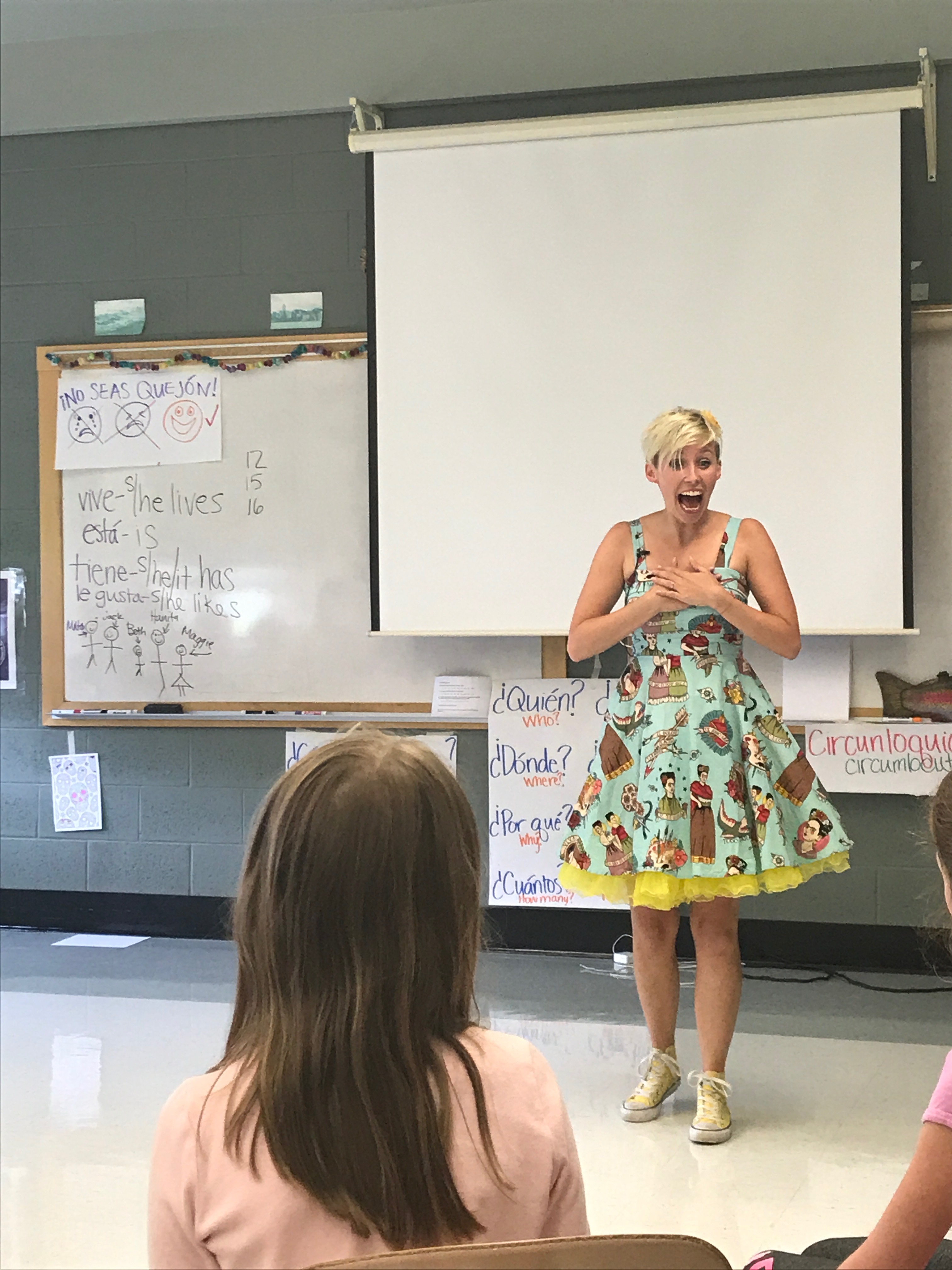
Love every minute of what you do!
- I like that you do think time after you ask a lot of your questions! Do you do that with older students?
- Yes, even adults!
- I also close my eyes so that kids who don’t know don’t have to feel embarrassed that the teacher sees they don’t know. (The teacher knows anyway, but kids don’t have to know that she knows.)
- It lowers the affective filter and gives the slow processors the think time they need
- As the year goes on, if you’re asking questions with old, recycled, acquired language, you may not need the think time, and that is OK.
- You have three hours with them today. In a normal school you have 30/40 minutes per week—how do you break that up? What does the first week of school look like?
Â
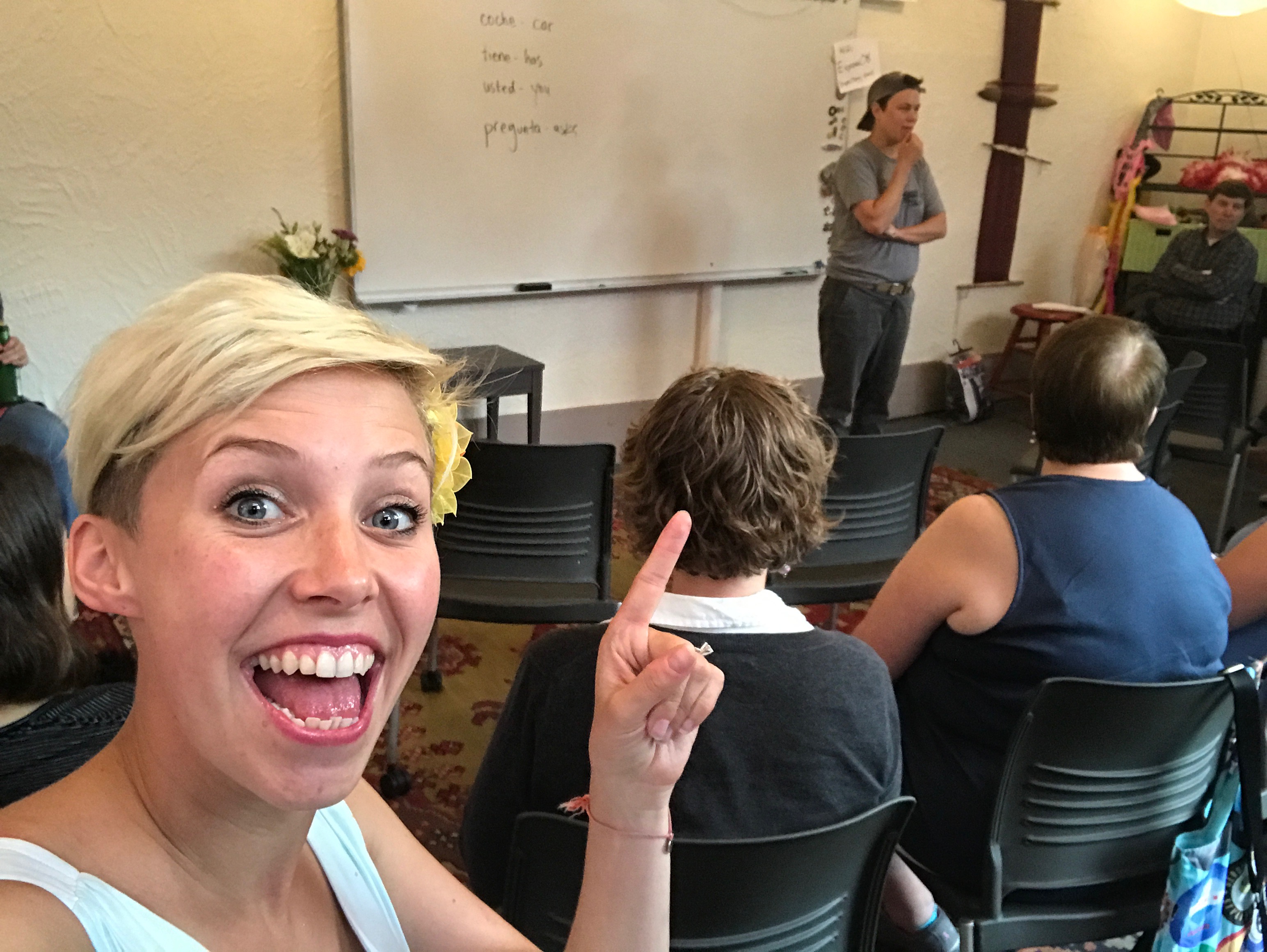
Blogs/People I mentioned throughout the conference in my various sessions and presentations in no particular order:
Â
- Carol Gaab and her presentations on NOVELTY as well as her website for Novels
- Mike Peto and his work with literacy and FVR libraries in the FL classroom
- Blair Richards and her genius work with elementary kids in her French classroom
- Erica Peplinski and her adaptations of Mafia as well as Evolution
- Allison Litten and her blog, she also blogged about her experiences at Express Fluency
- Kara Jacobs and her Teachers Pay Teachers site
- Martina Bex and her Mafia scripts
- Paul Kirschling (Colorado FL Teacher of the Year) and his approach to classroom management
- Elissa McLean and her classes for adults here in Brattleboro, VT
- Justin Slocom Bailey and his “Making Lemonadeâ€
- Jenny Wetzig and her up and coming blog! (For HIGHER levels) It is gonna be EPIC
- Mary Overton and her seating chart idea as well as her take on Mira Canion’s approach to PQA in the classroom
- Viviana Tracy and her blog and the mask she made me which she should SERIOUSLY start selling on Etsy!
- Grant Boulanger and his Rejoinder posters
- Mark Mallaney and Jenny Wetzig (again) and their approach to teaching with songs
- Tina Hargaden and her YouTube channel
- Brett Chonko and his stories and FVR library
- Señor Wooly
- Anne Marie Mitchell’s TPT shop for Elementary Resources
- Profe LOBA and her awesome blog and YouTube channel
- Keith Toda and his strategies for Mafia in the CI classroom
- Amy Marshall and her GAMES in the CI classroom
- Joe Dziedzic and CI Teachers
- Nina Barber and her work with Movie Talks
- Sabrina Janczak and Bryce Hedstrom and their work with Star Student
- Karen Rowan and her adult language classes through Fluency Fast
- Darcy Rogers and OWL
Â
Here are the links to my “stuffâ€
I am so grateful to Elissa for bringing me out to Vermont for Express Fluency! I am also grateful to her phenomenal husband, Andy, who I am fairly certain is the reason this week’s conference went off without a hitch. Their daughter, Emmy, is also an AWESOME human who kept me sane this week with our light night Harry Potter chats and “GLAMPING†down by the river!
Thank you to all of YOU who attended my workshops, labs, presentations, and coaching! (Coaching was a particularly special memory for me that I will treasure forever…. Thank you!) I enjoyed every minute of my time with you and learned SO much! I can’t wait to go back to school on Monday! YAY! Keep in touch!
Until next time,
HAPPY TEACHING my friends!
Love,
La Maestra Loca


GRACIAS 🙂 SÃ, usted está algo loca, jaja. Pero muy buena maestra de alumnos y también de maestros. CuÃdese. Saludos desde Vancouver.
<3 Gracias!!! <3 Nos vemos!!! xo
Gratias tibi ago! Postum optimum est!!!
OPTIMUM sounds like a GREAT word!
Annabelle, you are truly amazing! Thank you so so so much for coming to Vermont and teaching all these kiddos and teachers and then for taking the time to share so many resources and reflections. We are all so lucky to have you out there doing your thing!
<3 Love you! Thank you for having me!